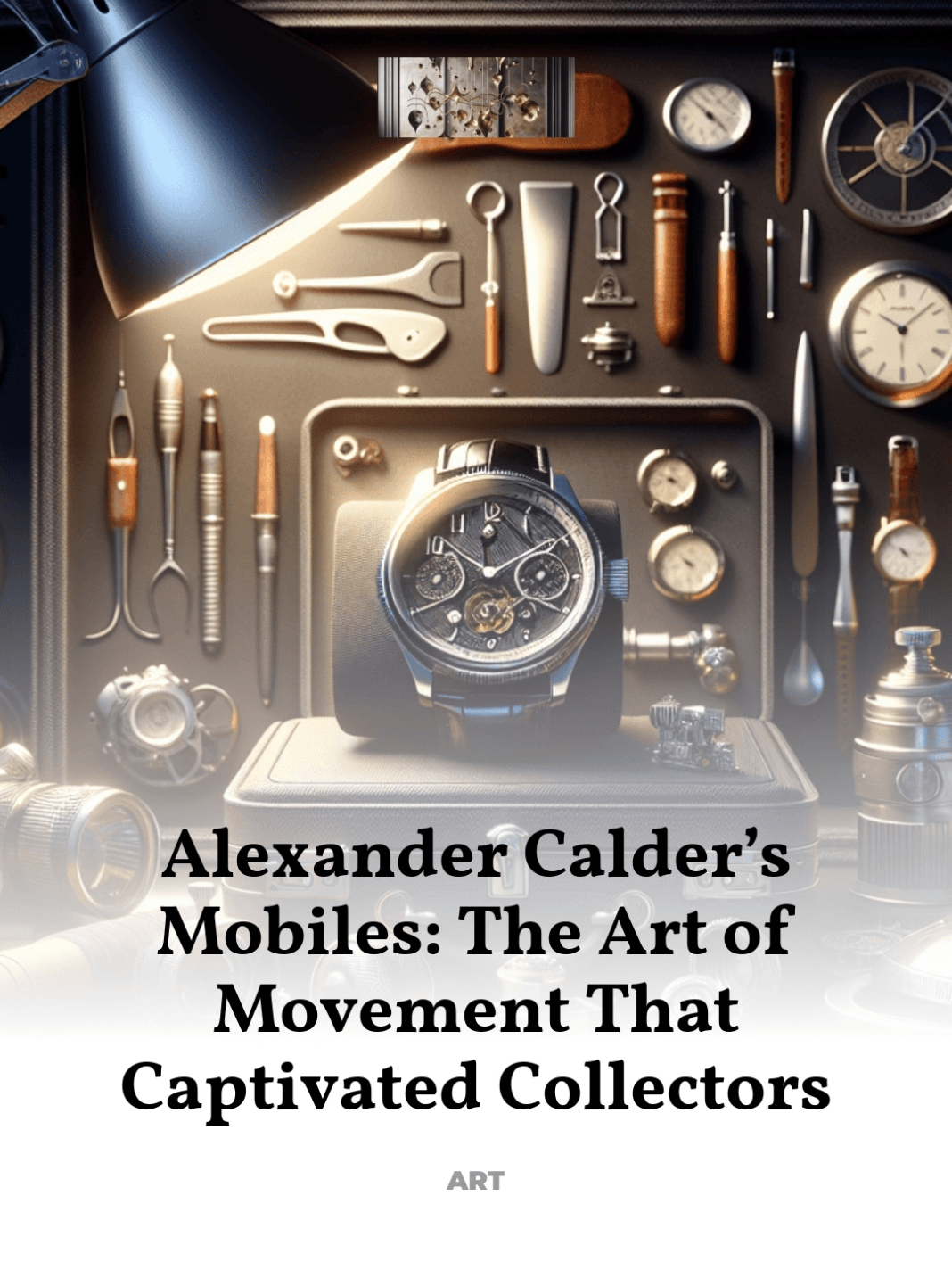How kinetic sculpture became a staple of modern collections
The dynamic grace of Alexander Calder’s mobiles revolutionized the concept of sculpture, infusing it with irresistible kinetic energy and transforming static art into mesmerizing spectacles of perpetual motion.
- The Genesis of Calder’s Mobiles: A New Art Form
- Design Principles Behind Calder’s Kinetic Sculptures
- Cultural Impact and Reception
- Why Collectors Are Fascinated by Calder’s Mobiles
- Preservation and Display in Modern Collections
- Concluding Reflections on Calder’s Legacy
The Genesis of Calder’s Mobiles: A New Art Form
In the early 20th century, Alexander Calder introduced the world to mobiles, a term coined by Marcel Duchamp to describe Calder’s innovative moving sculptures. These captivating works, characterized by their delicate balance and subtle, fluid motion, marked a departure from traditional static sculptures and opened up new possibilities in the art world.
Calder’s journey into kinetic art began after a visit to Piet Mondrian‘s studio in 1930, where he was inspired to incorporate movement into his work, envisioning something “half-tangible and half-not.” By integrating motion, Calder not only expanded the boundaries of sculpture but also engaged viewers in a dynamic interaction with his creations.
- Early Influences: Calder’s exposure to the abstract work of Mondrian and his background in mechanical engineering fueled his exploration into kinetic sculptures.
- Development of Mobiles: His first mobiles were simple, motor-driven objects, but he soon evolved to create suspended sculptures that moved with the flow of air.
Design Principles Behind Calder’s Kinetic Sculptures
Calder’s mobiles are a testament to his mastery of balance, color, and movement. Each piece is meticulously designed to respond to the slightest air currents, creating an ever-changing display of forms and shadows.
The artist’s engineering background is evident in the complex balance of weights and counterweights he employed, allowing for fluid movement. Calder’s use of bold colors and abstract shapes enhances the visual impact of his mobiles, making them not only moving sculptures but also living paintings that change at every angle.
- Material Choices: Calder commonly used materials like wire, metal sheets, and rods, which allowed for flexibility and durability.
- Color and Form: His strategic use of primary colors and organic shapes added an element of playfulness and accessibility to his sophisticated compositions.
Cultural Impact and Reception
Calder’s mobiles quickly captured the imagination of both the public and the art community. Exhibited globally, they challenged conventional notions of sculpture and influenced a generation of artists and designers.
Their introduction during the interwar period, a time of significant technological and artistic experimentation, resonated with a society fascinated by innovation and the promise of modernity. Calder’s work was seen not just as artistic expression but also as a symbol of the modern age, reflecting the cultural embrace of movement and change.
- Exhibitions and Critical Acclaim: From his first show at the Galerie Percier in Paris to major retrospectives at the Museum of Modern Art in New York, Calder’s exhibitions were met with critical acclaim.
- Influence on Other Artists: Calder’s concepts of motion and balance influenced numerous fields, including architecture, furniture design, and even jewelry.
Why Collectors Are Fascinated by Calder’s Mobiles
Collectors are drawn to Calder’s mobiles for their unique blend of artistic innovation, aesthetic appeal, and historical significance. Each mobile is a piece of the broader narrative of 20th-century art, representing a radical departure from traditional forms and practices.
Their kinetic nature adds an element of unpredictability and interaction that is rare in the world of art collecting. Owning a Calder mobile is not just about possessing a beautiful object; it is about engaging with a piece of art that is alive and responsive.
- Artistic Innovation: Calder’s work represents a significant breakthrough in the concept of sculpture.
- Aesthetic Appeal: The visual elegance and playful movement of his mobiles make them captivating additions to any collection.
- Historical Significance: As pivotal works in the history of modern art, Calder’s mobiles hold enduring cultural and artistic value.
Preservation and Display in Modern Collections
Preserving and displaying Calder’s mobiles involves meticulous care to maintain their delicate balance and ensure their longevity. Museums and private collectors alike must consider factors such as air flow, humidity, and exposure to light when exhibiting these kinetic sculptures.
Moreover, as objects that interact with their environment, mobiles require regular maintenance and occasional restoration to keep them moving as Calder intended. This aspect of care adds to their mystique and appeal, as each piece continues to evolve and respond to its surroundings over time.
- Conservation Techniques: Specialized conservation methods are employed to address the unique challenges posed by kinetic art.
- Display Considerations: Strategic placement is crucial to allow for natural air circulation and optimal viewing angles.
Concluding Reflections on Calder’s Legacy
Alexander Calder’s invention of the mobile redefined the possibilities of sculpture, introducing a dynamic and interactive element that continues to captivate and inspire. His work transcends traditional artistic boundaries, embodying a blend of engineering precision and creative vision that remains influential in contemporary art.
For collectors and enthusiasts, Calder’s mobiles are not just art objects but are vibrant, living pieces that engage with the world around them. They are a testament to Calder’s genius and a continuous source of fascination and delight in the ever-evolving landscape of modern art.
For further exploration of Calder’s work and its impact on modern art, visit authoritative sources such as the Calder Foundation.



